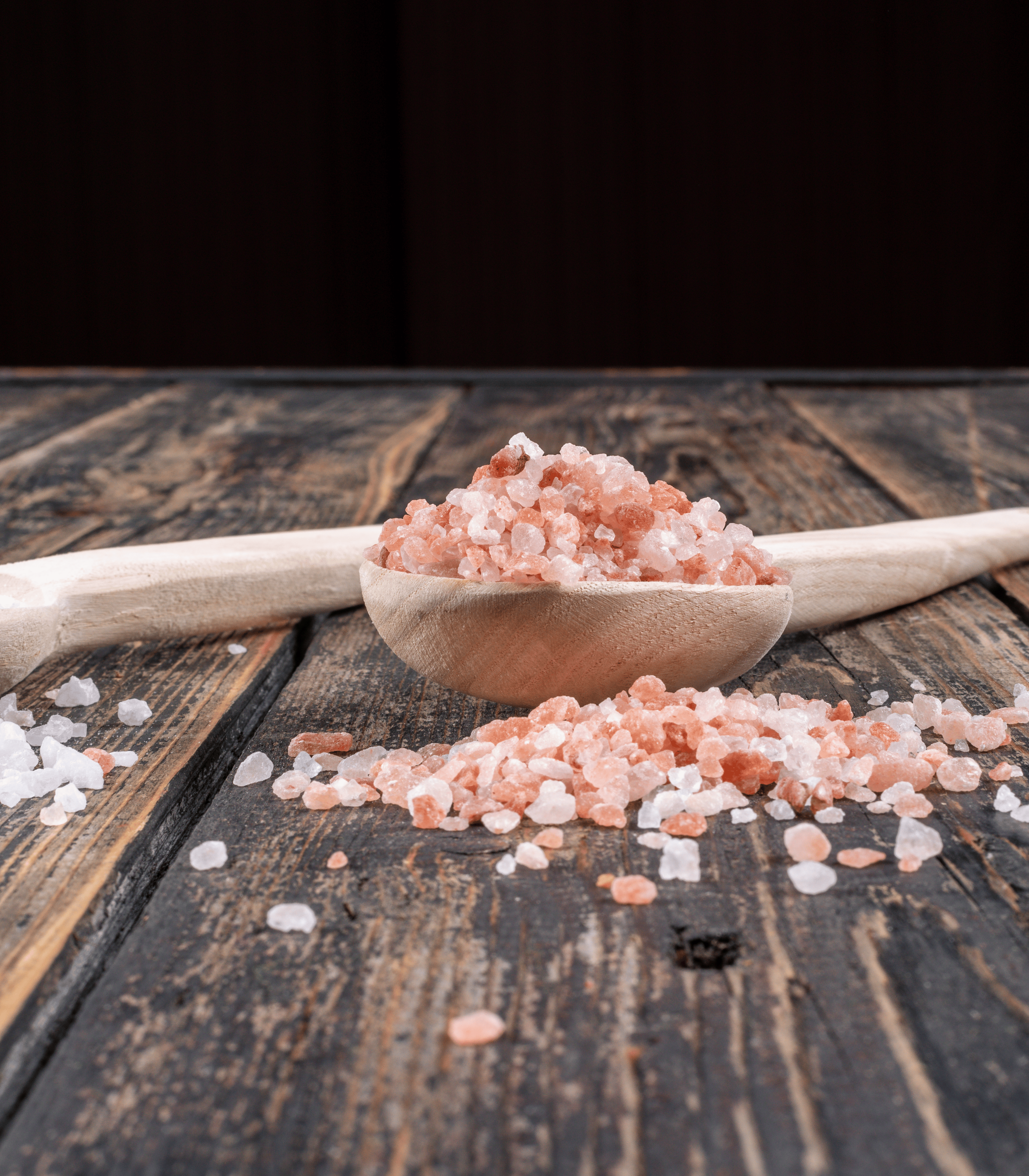Pink Salt Trick for Weight Loss: Does It Really Work?
In a world where health trends come and go, the “Pink Salt Trick” has gained unexpected popularity as a supposed secret to effective weight loss.
Promoted widely across social media platforms and wellness blogs, this trick claims that incorporating pink Himalayan salt into your daily routine can help shed pounds, suppress appetite, and enhance metabolism. But is there any truth to these claims? Or is this just another fleeting wellness fad?
In this comprehensive blog post, we will dive deep into the science, myths, and facts behind the pink salt trick for weight loss. We aim to help you understand what pink Himalayan salt is, what the pink salt trick involves, and whether or not it is a legitimate aid for those seeking to lose weight.

What is Pink Himalayan Salt?
Pink Himalayan salt is a type of rock salt that is mined from the Khewra Salt Mine in Pakistan, near the Himalayas.
Unlike regular table salt, which is heavily processed and stripped of most nutrients, pink Himalayan salt is minimally processed and often touted as a healthier alternative due to its trace mineral content. It owes its characteristic pink hue to the presence of iron oxide (rust), and it also contains trace amounts of calcium, potassium, and magnesium.
Due to its mineral content and natural origins, pink salt has earned a reputation as a more ‘natural’ and ‘nutrient-dense’ alternative to traditional table salt. It has been used in spa treatments, salt lamps, and even detox therapies. But its latest use as a weight loss aid is what has stirred interest in health circles recently.
What is the “Pink Salt Trick”?
The so-called “pink salt trick” typically refers to drinking a solution of pink Himalayan salt mixed with warm water first thing in the morning. Some versions suggest adding lemon juice or apple cider vinegar for added benefits.
The practice is often described as a way to kick-start your metabolism, cleanse your digestive system, and suppress hunger throughout the day.
Proponents claim that this trick helps by:
- Rebalancing electrolytes
- Stimulating digestion
- Curbing cravings
- Improving hydration
- Detoxifying the body
Let’s examine whether these claims are grounded in scientific reality or speculative hype.
Claim 1: Pink Salt Helps Rebalance Electrolytes
It is true that pink Himalayan salt contains trace minerals like potassium, calcium, and magnesium, which are important electrolytes for the body. These electrolytes help maintain fluid balance, nerve function, and muscle contraction.
The Reality:
While pink salt does contain more minerals than table salt, the quantities are minuscule. You would need to consume large (and unhealthy) amounts of pink salt to get a significant electrolyte boost. Relying on it as a primary source for electrolyte replenishment is misleading and potentially dangerous.
Claim 2: Stimulates Digestion and Metabolism
Some advocates argue that drinking pink saltwater can stimulate the production of digestive enzymes and bile, thereby enhancing digestion and speeding up metabolism.
The Reality:
Warm water in the morning can indeed wake up your digestive system. However, the addition of salt does not significantly enhance this effect. There’s no solid evidence that pink salt stimulates metabolism any more than a balanced meal or regular hydration would.
Claim 3: Suppresses Appetite and Reduces Cravings
One of the more attractive claims is that pink saltwater can help you feel fuller and reduce hunger cravings, potentially leading to reduced caloric intake.
The Reality:
Salt can affect appetite, but usually in the opposite direction. High sodium intake has been linked to increased hunger and cravings, especially for salty and high-fat foods. While some anecdotal accounts suggest that people feel fuller after drinking saltwater, this could be due to increased water intake rather than the salt itself.
Claim 4: Improves Hydration
Electrolyte-rich solutions are commonly used for rehydration in medical settings. Some suggest that pink saltwater provides a similar benefit.
The Reality:
While it’s true that electrolytes are important for hydration, the low concentration of minerals in pink salt makes it a weak solution compared to commercial electrolyte drinks. Also, excessive salt intake can lead to dehydration by promoting water loss through urine.
Claim 5: Detoxifies the Body
One of the most persistent myths is that pink Himalayan salt can detoxify the body by flushing out toxins.
The Reality:
There is no scientific basis for the claim that pink salt detoxifies the body. Detoxification is primarily handled by the liver and kidneys. Consuming saltwater does not expedite this process. In fact, high salt intake can burden the kidneys, especially in individuals with existing health conditions.
The Placebo Effect and Anecdotal Success Stories
Many individuals swear by the pink salt trick, citing weight loss, improved digestion, and increased energy levels. But could these effects be due to the placebo effect?
Possibly.
The placebo effect is a powerful psychological phenomenon. When people believe a treatment will work, they may unconsciously alter their behavior in ways that actually improve their health outcomes. For example, someone who starts the day with pink saltwater might also begin making healthier food choices, drinking more water, and exercising more regularly.
Potential Risks of the Pink Salt Trick
While pink Himalayan salt is generally safe in moderation, excessive intake can lead to a range of health issues:
- Hypertension (high blood pressure)
- Kidney strain
- Fluid retention
- Imbalance of other electrolytes
People with kidney disease, heart conditions, or those on sodium-restricted diets should avoid using saltwater solutions as a daily habit.
Scientific Studies and Expert Opinions
There is a glaring lack of peer-reviewed scientific studies supporting the pink salt trick for weight loss. Most claims are anecdotal or based on theories not yet substantiated by clinical trials.
Health and nutrition experts generally advise against relying on any single food or ingredient as a “magic bullet” for weight loss. Instead, sustainable weight loss is best achieved through:
- A balanced diet rich in whole foods
- Regular physical activity
- Adequate sleep
- Stress management
- Staying hydrated with plain water

Healthy Alternatives to the Pink Salt Trick
If you’re looking to boost your metabolism and support weight loss, consider the following evidence-based practices:
- Start Your Day with Protein: Eating a high-protein breakfast can reduce hunger and improve metabolism.
- Stay Hydrated: Drinking water before meals can help reduce appetite and support digestion.
- Exercise Regularly: Both cardio and strength training are effective for weight management.
- Get Enough Sleep: Poor sleep is linked to weight gain and reduced metabolic function.
- Eat Whole Foods: Focus on fruits, vegetables, lean proteins, and whole grains.
Final Verdict
In conclusion, while pink Himalayan salt does contain trace minerals and has a natural appeal, the pink salt trick is not a scientifically backed or effective strategy for weight loss. Any perceived benefits are more likely due to increased water intake, behavioral changes, or the placebo effect rather than the salt itself.
Rather than relying on gimmicks, focus on sustainable, evidence-based lifestyle changes. Always consult with a healthcare provider before making any significant changes to your diet, especially if you have existing health conditions.
References
- National Institutes of Health (NIH): https://www.nih.gov/
- Harvard School of Public Health: https://www.hsph.harvard.edu/
- Mayo Clinic: https://www.mayoclinic.org/
- American Heart Association: https://www.heart.org/
- Academy of Nutrition and Dietetics: https://www.eatright.org/
- World Health Organization (WHO): https://www.who.int/
.